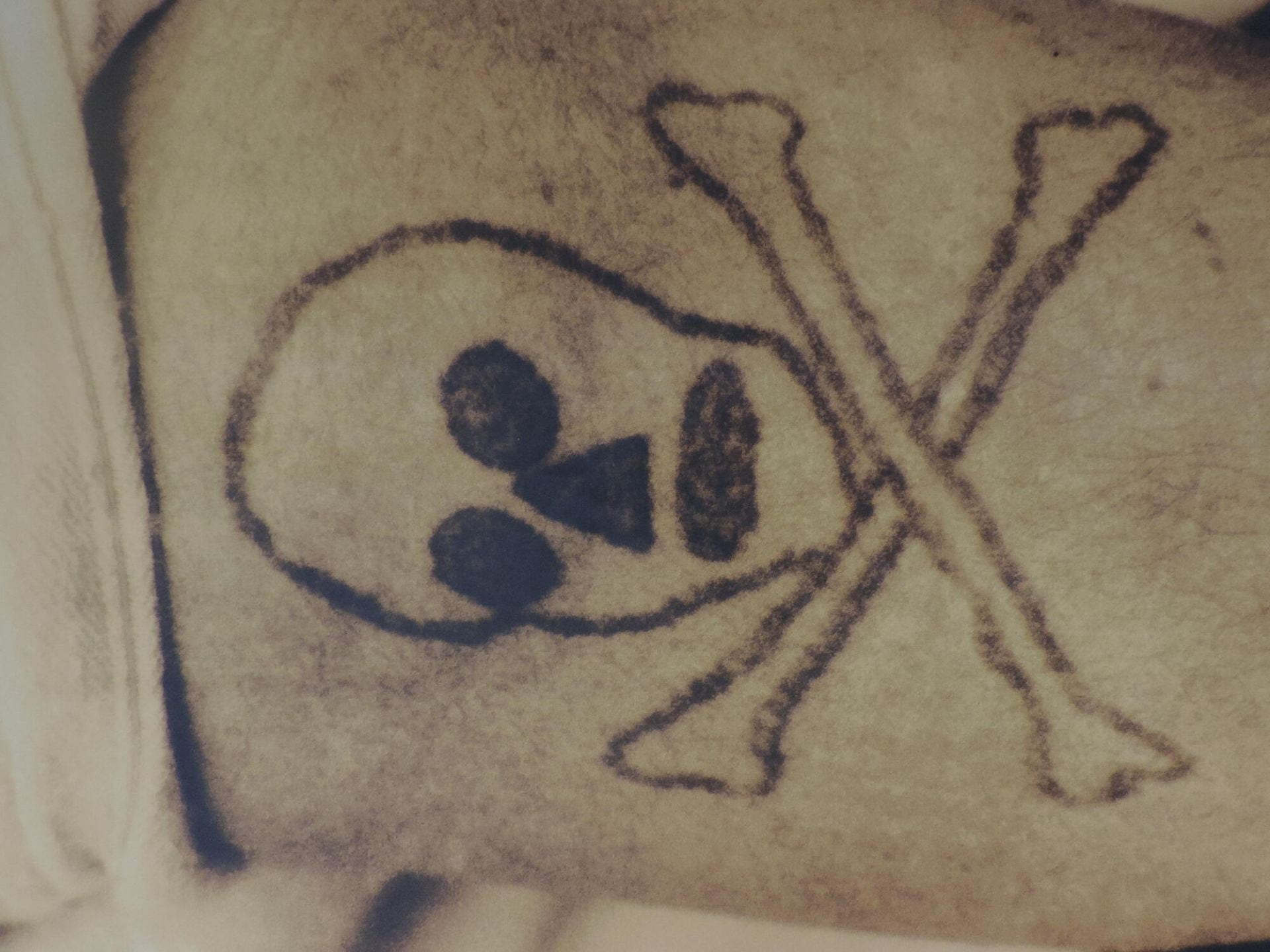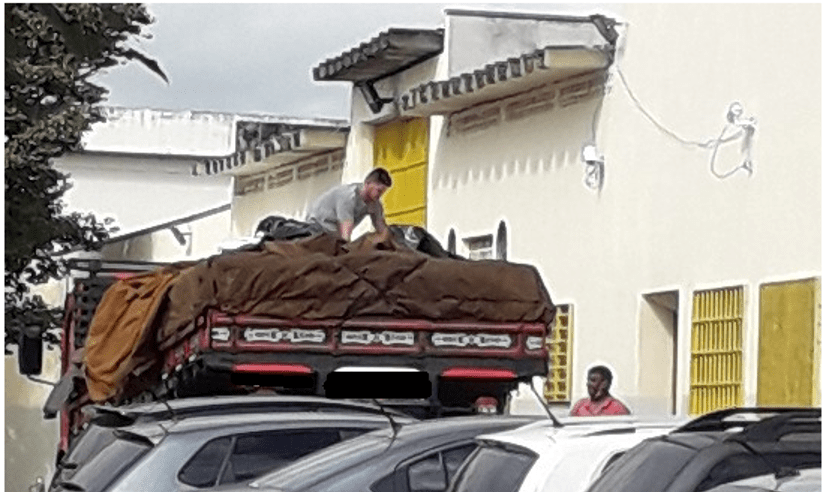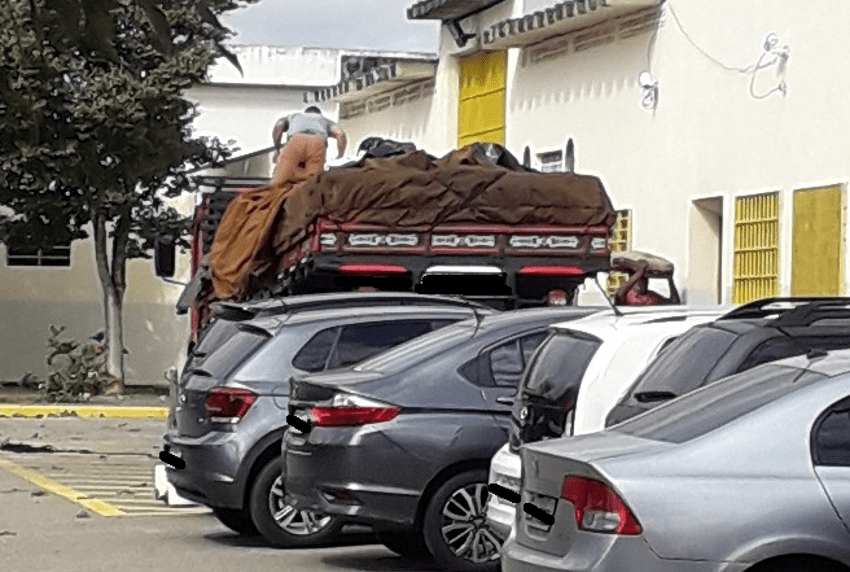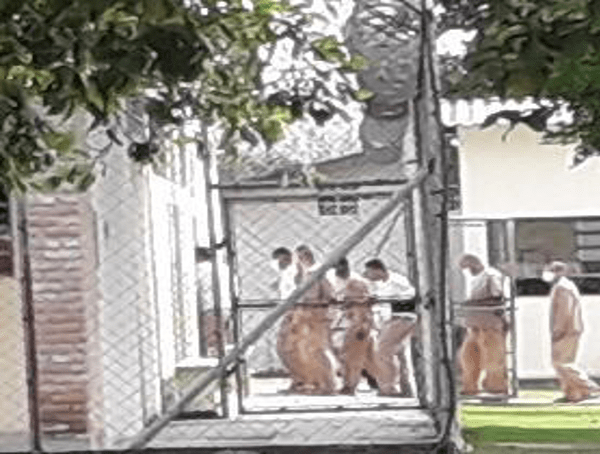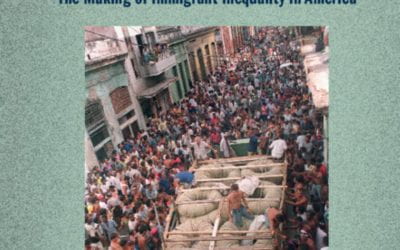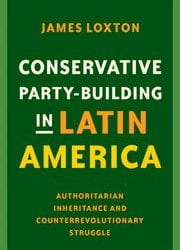Pandemic in the Brazilian Prison System
Fighting the State to Survive
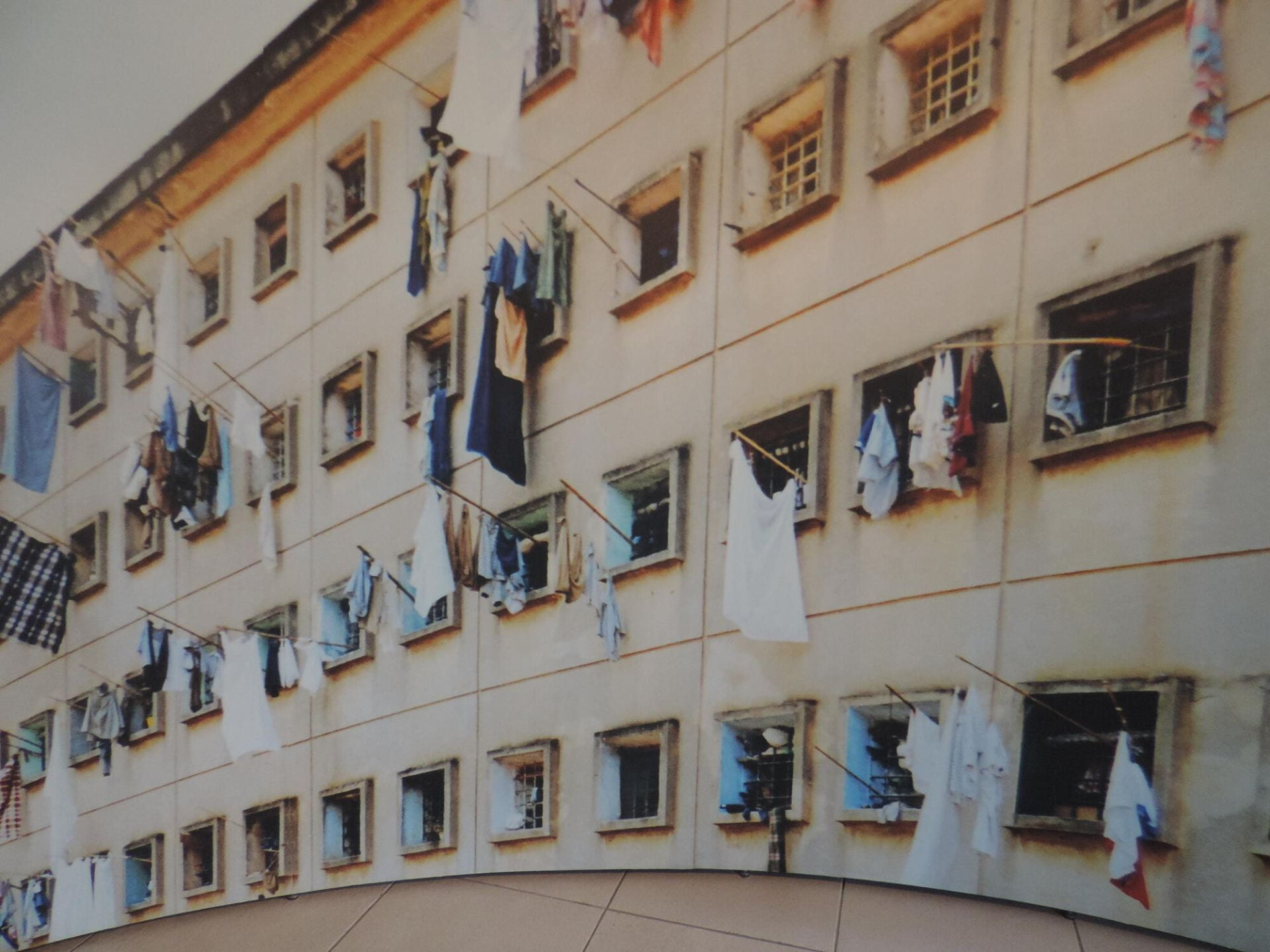
The First General Headquarters of the PCC, from which criminal orders were given for attacks in 2001 and 2006: // A Primeira Sede Geral do PCC, de onde foram dadas ordens criminais para ataques em 2001 e 2006: https://www.youtube.com/watch?v=UpLoKwhnSXs
I’m a prison guard. I witness firsthand the COVID-19 pandemic challenges in the Brazilian prison system. This experience sharpened my interest in studying the effect of Covid-19 in prisons, given the difficulty faced by scientists in accessing it in order to conduct research. The challenges are not simple: Brazil has the third largest prison population in the world.
These more than 24 years immersed in prison research, living it day after day—sometimes during the day, sometimes at night—made me learn much from its inhabitants.
My research showed that the situation of the Covid-19 pandemic in the Brazilian prison system is very serious. Cases of underreporting are occurring, which remind me of the dialogues I had with prisoners who survived the Carandiru Massacre in 1992, in which military police invaded a penitentiary after a prison riot, and informed me that they helped put the bodies of dead inside the garbage trucks so that the official number of dead presented would be lower.
That kind of research is nothing new to me. In the 1990s, I studied the problem of AIDS and how the First Command of the Capital—a criminal organization that was born in prison on August 31, 1993—would treat this situation, since this criminal organization is one of my lines of research. Besides being a prison security agent in the state of São Paulo since 1994, I have been researching penitentiaries for more than 24 years.
In the 1990s it was common for inmates to receive visits from prostitutes. There was a prostitution scheme in prison, involving such women. He took advantage of this period. As time went by, new hookers appeared during inmates’ visitation periods and so the spread of AIDS occurred.
I was able to verify that the inmate I had been observing since his entry, who previously did not even receive visits from his relatives, was now a “boieiro” (the one who distributes food to prisoners).
Years passed and now he was getting a visit.
There was one person who presented herself in the penitentiary as his wife, coming to visit him with that alleged status.
In less than a year I could see that AIDS was consuming him, and his partner was no longer visiting him. That inmate, who lived in the boieiros cell, could no longer work with food delivery because of having AIDS and would have to look for another place to live. I observed communication with libras (Brazilian Sign Language). The Crime wanted to assign him to one of the cells in the infirmary wing, but he wanted to return to the pavilion where he lived when he entered the penitentiary, because he knew that in the infirmary he would see naked prisoners, and prisoners who defecate and urinate on their clothes, who should be in a psychiatric hospital, but who are instead in a maximum security penitentiary, worsening their mental problems. He did not want to see this and also knew that if he was allowed to sunbathe with the prison population, he could participate in the samba circle with the inmates of the “Pessoal do Samba/Samba Guys, ”who live in his old pavilion. He could also watch the football games in the cells, which remain open throughout the inmates’ visit. He could also have access to the prostitutes of the “Jail Book,” as other inmates even told me during the conversations I had with them inside the cells, a book tht provided them with photos, ages and other information about each prostitute available to attend the inmates.
He, at least in theory, would have access to drugs, as well as “Maria Louca/Crazy Maria” (brandy made by inmates in jail with rice and oranges, among other ingredients). However, intestinal bleeding and other symptoms resulting from HIV caused him to be labeled as posing a danger, especially for the relatives of visitors, since it was not known at the time how HIV/AIDS was transmitted.
Forbidden from access to the sun, he decided one day (in possession of a stiletto, made from a piece of glass from his cell’s stained glass window) to use the prison guard as a bargaining chip to demand his transfer to another prison unit. And he did it! But in prison we knew things and I was informed that he would have gone to a unit, but instead he went to the penitentiary hospital, where he died, due to the aggravation of his condition.
The state I live in has the largest prison population in Brazil, and the first case of Covid-19 in São Paulo was diagnosed in an employee of the Hospital Center of the prison system. This reminded me that more than twenty years ago, a health unit, also from the São Paulo prison system, would have supported another pandemic, that of HIV. Inmates in prison are now not dying from AIDS; the current plague is Covid-19, but I see many of the same problems.
To conduct this research on Covid-19, I began by sharing the research method through WhatsApp with the president of the union SIFUSPESP, one of the unions of penitentiary security agents and other employees of the Secretariat of Penitentiary Administration of São Paulo (SAP). He was ready to help me.
He immediately appointed professionals from his own trade union to help me, but unfortunately they did not cooperate.
What would be a research facilitator became a difficulty, including the documentary part. I could access the materials through internet searches, union websites and other sites, where I found court decisions, academic articles and other material.
I found it difficult to research the subject I proposed to write, bearing in mind that visitors, prisoners and also employees of the prison system in São Paulo, fear being punished if someone find out that they are whistleblowers, since— like sex offenders—they are targets of hate in prison.
The Union of Employees of the Penitentiary System of the State of São Paulo (SIFUSPESP), sent a document to the Secretariat of Penitentiary Administration of the State of São Paulo, to the Court of Justice of São Paulo. The court did not suspend prison visits, but recognized the right of pregnant employees to stay away from prisons, and also ruled that the state must guarantee the supply of equipment for individual and collective protection, under penalty of one hundred thousand reais per day, if not provided within five days. Even before the court decision, the Third Generation of the First Command of the Capital (PCC), created after the Carandiru massacre, ordered that prisoner visits be suspended to try to prevent thousands of prisoner deaths.
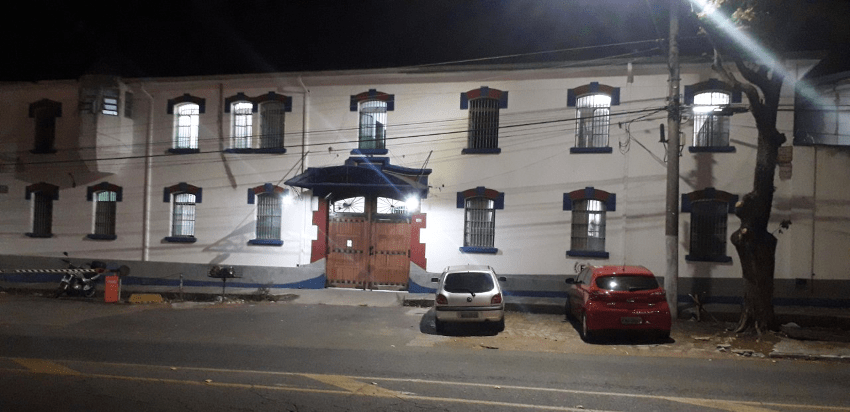
The First General Headquarters of the PCC were remodeled and transformed into the Hospital of Prison Custody and Treatment. // A Primeira Sede Geral do PCC foi remodelada e transformada em Hospital de Custódia e Tratamento Penitenciário.
Subsequently, the São Paulo State Penitentiary Agents Union (SINDASP-SP) filed a lawsuit to prevent prison visits because of Covid-19, and an injunction was granted. The struggle continues. The guards’ union asked the courts for the suspension of transfers from the capital to the prison units belonging to the group of the Coordination of Prison Units of the central region of the State (there are seven Coordination Offices), as well as any transfer of prisoners between units subordinated to the Coordination Office.
There’s a lot to worry about in the prison system. The National Council of Justice (CNJ) provides a weekly follow-up of Covid-19 cases on its website. This group aims to improve the work of the Brazilian judicial system, with the objective of promoting the development and coordination of programs that prioritize areas of human rights. On August 17, the group had reported 24,200 confirmed cases of Covid-19, an increase of 61,7% in the last thirty days and 7.7% in the last week. Of those cases, 165 deaths were registered, an increase of 26.9% in the last thirty days and an increase of 2.5% in the last week). In prisons, there are 17,057 confirmed cases and 90 recorded deaths, and in the case of prison guards, there are 7,143 confirmed cases with 75 recorded deaths. SIFUSPESP received several complaints that SAP was not complying with the judicial decision, including the supply of personal protection equipment. Another example: in Penitentiary I in Itirapina, three employees and 19 prisoners with Covid-19 are not isolated from the others, and the unit still receives prisoners from other units. The City Hall of Itirapina, for months, omitted information about the infected prisoners.
Some penitentiary employees in the State of São Paulo refuse to wear masks in the pavilions, and some simply do not have masks, since SAP does not provide them.
I went to investigate the outside area of the prison unit where I work, so that I could see with my own eyes if the wheels and/or vehicles entering the prison unit were clean, how the entrance of materials would work to make the incarceration machine work. The reality is sad, servants not wearing masks already at the entrance of the prison unit, where we serve people who visited or are requesting information in the prison unit. I looked for a place with better visibility, and from there I could see that people without masks, near a truck, were preparing to unload it. From there I could see the materials entering the prison unit in the same way as they had before the onset of Covid-19.
- Dr. Tarcizo Leonce Pinheiro Cintra Penitentiary of Tremembé. // Penitenciária Dr. Tarcizo Leonce Pinheiro Cintra de Tremembé.
- In the photo above, after the gate, we can see an inmate without a mask. // Na foto acima, depois do portão, podemos ver um preso sem máscara.
- We can also notice unmasked servers and/or using it incorrectly here. // Também podemos notar servidores desmascarados e/ou usá-los incorretamente na imagem.
The pictures show us people whose noses and mouths weren’t covered. Among them, one person from the semi-open, two prison guards near the penitentiary kennel, and two other people who were in the truck.
The rate of positive cases, as well as deaths of prison guards and inmates, is still low, considering that the state is not fulfilling the basic duties it should obey to avoid the proliferation of Covid-19.
In the 1990s, I saw inmates having to leave the pavilions several times because of AIDS.They were accompanied by PCC members who requested dignified treatment for sick prisoners, claiming that this is the law, and that it is the inmate’s right to have their health taken care of by the state.
The prison units did not have clinics or medications to care for inmates who had contracted such diseases. Some hung themselves in their cells; others were transferred to other pavilions and tried to hide their illness from fellow prisoners. This is very difficult to do and they often ended up being transferred to the infirmary.
In the infirmary, inmates without AIDS demanded the exit of AIDS patients, fearing that they and their visitors would contract the disease.
The prison administration reported that AIDS patients belonged to the infirmary. At the time, I saw inmates with AIDS having to ask for personal insurance protection (prison insurance), since other prisoners threatened them with death. They were afraid to say who the threats came from, because if they did, they would be sentenced to death; there is no pardon for the whistleblowers in prison. Now the situation is in danger of repeating itself. SAP has created internal standards to help prevent the coronavirus contagion. The measure includes allowing employees who are 60 or older, or who can prove that they have certain pre-existing medical conditions, to apply for vacation or license, as of March 26, 2020.
However, I have seen that some employees are unwilling to claim these rights as they fear being transferred to a unit away from their families in return. They also fear losing positions of trust and perhaps being labeled as “bad employees.”
The Socialism and Freedom Party (Partido Socialismo e Liberdade – PSOL) has filed a suit with the Supreme Court to prevent the proliferation of the Covid-19 pandemic in the Brazilian prison system. Later, the Brazilian Institute of Criminal Sciences (IBCCRIM) asked the Supreme Court to qualify as a friend of the court in support of the PSOL process.
I was not surprised by the reactions of the state, the CCP and institutes such as trade unions. What I expected to find at the beginning of the research became a reality at the end of the investigation, including the court decisions.
As a prison guard, this experience was very enriching for my academic life.
I worked in the forum, where I was able to read the prisoners’ files and later I was the investigative authority in a prison, a kind of policeman who checks the inmates’ and staff’s irregularities and, with this, I was able to access and study, in a more in-depth way, the subject that is my line of research: prisons and penitentiary criminology.
I have not seen the same fear of prisoners in relation to Covid-19, as I saw at the time of AIDS in the 1990s, because at that time they often refused to enter their cells, demanding their rights. This is no longer happening.
I believe that one of the reasons is that there are no face-to-face visits and, therefore, there is no fear of the spread of Covid-19 to or from their visitors.
I also conclude that, once again, the PCC abolishes the state’s obligation with regard to the cases of this new pandemic that plagues the São Paulo prison system, and that undoubtedly, if it were not for the great interference of the same (and other institutions), the number of deaths would be much higher, due to the high agglomeration of inmates, the staggering numbers of the prison population, and people who do not wear or improperly use the masks. We are left to the irresponsibility of the government.
I hope more people become interested in prison studies. In Brazil, there is no room for a chair in Penitentiary Criminology, many academic institutions do not even include criminology as a field. There is a very important academic void to be covered as to prison studies.
To the end of Prison Necropolitics.
Pandemia no Sistema Prisional Brasileiro
Lutando contra o Estado para sobreviver
Por Diorgeres de Assis Victorio

The First General Headquarters of the PCC, from which criminal orders were given for attacks in 2001 and 2006. // A Primeira Sede Geral do PCC, de onde foram dadas ordens criminais para ataques em 2001 e 2006. See//Veja: https://www.youtube.com/watch?v=UpLoKwhnSXs.
Sou um guarda da prisão. Testemunhei em primeira mão os desafios da pandemia COVID-19 no sistema prisional brasileiro. Essa experiência aguçou meu interesse em estudar o efeito do Covid-19 nas prisões, dada a dificuldade enfrentada pelos cientistas em acessá-la para realizar pesquisas. Os desafios não são simples: o Brasil tem a terceira maior população carcerária do mundo.
Esses mais de 24 anos imersos em pesquisas prisionais, vivendo dia após dia às vezes durante o dia, às vezes à noite me fizeram aprender muito com seus habitantes.
Minha pesquisa mostrou que a situação da pandemia Covid-19 no sistema prisional brasileiro é muito grave. Casos de subnotificação estão ocorrendo, o que me lembra os diálogos que tive com os presos que sobreviveram ao Massacre do Carandiru em 1992, em que policiais militares invadiram uma penitenciária após um motim na prisão, e me informaram que ajudaram a colocar os corpos de mortos dentro dos caminhões de lixo para que o número oficial de mortos apresentados fosse menor.
Esse tipo de pesquisa não é novidade para mim. Na década de 1990, estudei o problema da AIDS e como o Primeiro Comando da Capital—organização criminosa que nasceu na prisão em 31 de agosto de 1993—trataria essa situação, já que essa organização criminosa é uma das minhas linhas de investigação. Além de agente de segurança penitenciária no estado de São Paulo desde 1994, faço pesquisa em penitenciárias há mais de 24 anos.
Na década de 1990 era comum os detentos receberem visitas de prostitutas. Havia um esquema de prostituição na prisão, envolvendo essas mulheres. Ele se aproveitou desse período. Com o passar do tempo, novas prostitutas apareceram durante os períodos de visitação dos detentos e assim ocorreu a disseminação da AIDS.
Pude verificar que o preso que eu vinha observando desde sua entrada, que anteriormente nem recebia visitas de seus parentes, agora era um “boieiro” (aquele que distribui comida aos presos).
Anos se passaram e agora ele estava recebendo uma visita.
Havia uma pessoa que se apresentou na penitenciária como sua esposa, vindo visitá-lo com esse suposto status.
Em menos de um ano pude ver que a AIDS o consumia, e seu parceiro não o visitava mais. Aquele preso, que morava na cela dos Boieiros , não podia mais trabalhar com entrega de alimentos por causa da aids e teria que procurar outro lugar para morar. Observei comunicação com libras (Língua Brasileira de Sinais). O Crime queria atribuí-lo a uma das celas da ala da enfermaria, mas ele queria voltar para o pavilhão onde morava quando entrou na penitenciária, porque sabia que na enfermaria veria prisioneiros nus, e prisioneiros que defecam e urinam em suas roupas, que deveriam estar em um hospital psiquiátrico, mas que estão em uma penitenciária de segurança máxima, piorando seus problemas mentais.
Ele não queria ver isso e também sabia que se ele pudesse tomar sol com a população carcerária, ele poderia participar da roda de samba com os detentos do “Pessoal do Samba/Samba”, que moram em seu antigo pavilhão. Ele também podia assistir aos jogos de futebol nas celas, que permanecem abertos durante toda a visita dos detentos. Ele também poderia ter acesso às prostitutas do “Livro da Prisão”, como outros presos até me disseram durante as conversas que tive com eles dentro das celas, um livro que lhes forneceu fotos, idades e outras informações sobre cada prostituta disponível para atender aos presos.
Em tese, ele teria acesso a drogas, assim como “Maria Louca/Louca Maria” (aguardente, cachaça feita por detentos na cadeia com arroz e laranjas, entre outros ingredientes). No entanto, o sangramento intestinal e outros sintomas decorrentes do HIV fizeram com que ele fosse rotulado como um perigo, especialmente para os familiares dos visitantes, uma vez que não se sabia na época como o HIV/AIDS era transmitido.
Proibido de ter acesso ao sol, ele decidiu um dia (em posse de um estilete, feito de um pedaço de vidro do vitral de sua cela) usar o guarda prisional como moeda de troca para exigir sua transferência para outra unidade prisional. E ele conseguiu! Mas na prisão sabíamos das coisas e fui informado que ele teria ido para uma unidade, mas em vez disso ele foi para o hospital penitenciário, onde morreu, devido ao agravamento de sua condição..
O estado em que vivo tem a maior população carcerária do Brasil, e o primeiro caso do Covid-19 em São Paulo foi diagnosticado em um funcionário do Centro Hospitalar do Sistema Prisional. Isso me lembrou que há mais de vinte anos, uma unidade de saúde, também do sistema prisional de São Paulo, teria apoiado outra pandemia, a do HIV. Os presos na prisão não estão morrendo de AIDS; a praga atual é Covid-19, mas vejo muitos dos mesmos problemas.

The First General Headquarters of the PCC were remodeled and transformed into the Hospital of Prison Custody and Treatment. // A Primeira Sede Geral do PCC foi remodelada e transformada em Hospital de Custódia e Tratamento Penitenciário.
Para realizar essa pesquisa sobre o Covid-19, comecei compartilhando o método de pesquisa pelo WhatsApp com o presidente do sindicato SIFUSPESP, um dos sindicatos de agentes penitenciários e outros funcionários da Secretaria de Administração Penitenciária de São Paulo (SAP). Ele estava pronto para me ajudar.
Ele imediatamente nomeou profissionais de seu próprio sindicato para me ajudar, mas infelizmente eles não cooperaram.
O que seria um facilitador de pesquisa tornou-se uma dificuldade, incluindo a parte documental. Pude acessar os materiais através de pesquisas na internet, sites sindicais e outros sites, onde encontrei decisões judiciais, artigos acadêmicos e outros materiais.
Achei difícil pesquisar o assunto que propus escrever, tendo em vista que visitantes, presos e também funcionários do sistema prisional de São Paulo, temem ser punidos se alguém descobrir que são delatores, já que— como agressores sexuais —são alvos de ódio na prisão.
O Sindicato dos Empregados do Sistema Penitenciário do Estado de São Paulo (SIFUSPESP), enviou um documento à Secretaria de Administração Penitenciária do Estado de São Paulo, ao Tribunal de Justiça de São Paulo. O tribunal não suspendeu as visitas à prisão, mas reconheceu o direito das funcionárias grávidas de ficarem longe das prisões, e também determinou que o Estado deve garantir o fornecimento de equipamentos para proteção individual e coletiva, sob pena de cem mil reais por dia, caso não seja fornecido no prazo de cinco dias. Mesmo antes da decisão judicial, a Terceira Geração do Primeiro Comando da Capital (PCC), criada após o massacre do Carandiru, ordenou que as visitas de presos fossem suspensas para tentar evitar milhares de mortes de presos.
Posteriormente, o Sindicato dos Agentes Penitenciários do Estado de São Paulo (SINDASP-SP) entrou com uma ação judicial para impedir visitas à prisão por causa do Covid-19, e foi concedida uma liminar. A luta continua. O sindicato dos guardas solicitou à Justiça a suspensão das transferências da capital para as unidades prisionais pertencentes ao grupo da Coordenação de Unidades Prisionais da região central do Estado (há sete Coordenações), bem como qualquer transferência de presos entre unidades subordinadas à Coordenação.
Há muito com que se preocupar no sistema prisional. O Conselho Nacional de Justiça (CNJ) disponibiliza em seu site um acompanhamento semanal dos casos do Covid-19. Esse grupo tem como objetivo aprimorar o trabalho do sistema judiciário brasileiro, com o objetivo de promover o desenvolvimento e a coordenação de programas que priorizam áreas de direitos humanos. Em 17deagosto, o grupo havia notificado 24.200 casos confirmados de Covid-19, um aumento de 61,7% nos últimos trinta dias e 7. 7% na última semana. Desses casos, foram registrados 165 óbitos, um aumento de 26. 9% nos últimos trinta dias e aumento de 2. 5% na última semana). Nas prisões, são 17,057 casos confirmados e 90 mortes registradas, e no caso dos guardas prisionais, há 7.143 casos confirmados com 75 mortes registradas. O SIFUSPESP recebeu diversas denúncias de que a SAP não estava cumprindo a decisão judicial, incluindo o fornecimento de equipamentos de proteção individual, mesmo na Penitenciária I (um) na cidade de Itirapina, tem três funcionários e dezenove presos com Covid-19 que não estão isolados dos demais, e a unidade ainda recebe presos de outras unidades. A Prefeitura de Itirapina, durante meses, omitiu informações dos presos infectados.
Alguns funcionários penitenciários do Estado de São Paulo se recusam a usar máscaras nos pavilhões, e alguns simplesmente não têm máscaras, já que a SAP não as fornece.
Fui investigar a área externa da unidade prisional onde trabalho, para que eu pudesse ver com meus próprios olhos se as rodas e/ou veículos que entravam na unidade prisional estavam limpos, como a entrada de materiais funcionaria para fazer a máquina de encarceramento funcionar. A realidade é triste, servidores que não usam máscaras já na entrada da unidade prisional, onde atendemos pessoas que visitaram ou estão solicitando informações na unidade prisional. Procurei um lugar com melhor visibilidade, e de lá pude ver que pessoas sem máscaras, perto de um caminhão,
estavam se preparando para descarregá-lo. De lá pude ver os materiais entrando na unidade prisional da mesma forma que tinham antes do início de Covid-19. -19.
- Dr. Tarcizo Leonce Pinheiro Cintra Penitentiary of Tremembé. // Penitenciária Dr. Tarcizo Leonce Pinheiro Cintra de Tremembé.
- In the photo above, after the gate, we can see an inmate without a mask. // Na foto acima, depois do portão, podemos ver um preso sem máscara.
- We can also notice unmasked servers and/or using it incorrectly here. // Também podemos notar servidores desmascarados e/ou usá-los incorretamente na imagem.
As fotos nos mostram que as pessoas não estavam com seus narizes e bocas cobertas. Entre eles, uma pessoa do semiaberto, dois guardas prisionais próximos ao canil penitenciário e outras duas pessoas que estavam no caminhão.
A taxa de casos positivos, assim como as mortes de guardas prisionais e detentos, ainda é baixa, considerando que o Estado não está cumprindo os deveres básicos que deve obedecer para evitar a proliferação de Covid-19.
Na década de 1990, vi detentos tendo que sair dos pavilhões várias vezes por causa da AIDS. Eles foram acompanhados por membros do PCC que solicitaram tratamento digno para os presos doentes, alegando que esta é a lei, e que é direito do preso ter sua saúde cuidada pelo Estado.
As unidades prisionais não possuíam clínicas ou medicamentos para cuidar de detentos que contraíram tais doenças. Alguns se enforcaram em suas celas; outros foram transferidos para outros pavilhões e tentaram esconder sua doença de companheiros prisioneiros. Isso é muito difícil de fazer e muitas vezes eles acabaram sendo transferidos para a enfermaria.
Na enfermaria, os detentos sem AIDS exigiram a saída dos pacientes com AIDS, temendo que eles e seus visitantes contraíssem a doença.
A administração penitenciária informou que os pacientes com AIDS pertenciam à enfermaria. Na época, vi detentos com AIDS tendo que pedir proteção de seguro pessoal (seguro prisional), já que outros presos os ameaçavam de morte. Eles tinham medo de dizer de quem vinham as ameaças, porque se o fizessem, seriam condenados à morte; não há perdão para os denunciantes na prisão. Agora a situação corre o risco de se repetir. O SAP criou padrões internos para ajudar a prevenir o contágio do coronavírus. A medida inclui permitir que funcionários com 60 anos ou mais, ou que possam provar que têm determinadas condições médicas pré-existentes, solicitem férias ou licença, a partir de 26 de março de 2020.
No entanto, vi que alguns funcionários não estão dispostos a reivindicar esses direitos, pois temem ser transferidos para uma unidade longe de suas famílias em troca. Eles também temem perder cargos de confiança e talvez serem rotulados como “maus funcionários. ”
O Partido Socialismo e Liberdade (PSOL) entrou com uma ação no Supremo Tribunal Federal para impedir a proliferação da pandemia do Covídeo-19 no sistema prisional brasileiro. Mais tarde, o Instituto Brasileiro de Ciências Criminais (IBCCRIM) pediu ao Supremo Tribunal Federal que se qualifique como amigo do tribunal em apoio ao processo do PSOL.
Não fiquei surpreso com as reações do Estado, do PCC e de institutos como sindicatos. O que eu esperava encontrar no início da pesquisa tornou-se realidade no final da investigação, incluindo as decisões judiciais.
Como guarda prisional, essa experiência foi muito enriquecedora para minha vida acadêmica.
Trabalhei no fórum, onde pude ler os arquivos dos presos e depois fui a autoridade investigativa em uma prisão, uma espécie de policial que verifica as irregularidades dos presos e funcionários e, com isso, pude acessar e estudar, de forma mais aprofundada, o assunto que é a minha linha de pesquisa: prisões e criminologia penitenciária.
Não vi o mesmo medo dos presos em relação a Covid-19, como vi na época da AIDS na década de 1990, porque naquela época eles muitas vezes se recusavam a entrar em suas celas, exigindo seus direitos, e isso não está mais acontecendo.
Acredito que uma das razões é que não há visitas presenciais e, portanto, não há medo da disseminação de Covid-19 aos seus visitantes.
Concluo ainda que, mais uma vez, o PCC aboliu a obrigação do Estado em relação aos casos dessa nova pandemia que assola o sistema prisional paulista, e que, sem dúvida, se não fosse a grande interferência do mesmo (e de outras instituições), o número de mortes seria muito maior, devido à alta aglomeração de presos, ao número impressionante da população carcerária e às pessoas que não usam ou usam indevidamente as máscaras. Ficamos com a irresponsabilidade do governo.
Espero que mais pessoas se interessem por estudos prisionais. No Brasil, não há espaço para uma cadeira em Criminologia Penitenciária, muitas instituições acadêmicas nem sequer incluem a criminologia como campo. Há um vazio acadêmico muito importante a ser coberto quanto aos estudos prisionais.
Até o fim da Necropolítica Prisional.
Related Articles
A Review of Cuban Privilege: the Making of Immigrant Inequality in America by Susan Eckstein
If anyone had any doubts that Cubans were treated exceptionally well by the United States immigration and welfare authorities, relative to other immigrant groups and even relative to …
A Review of Conservative Party-Building in Latin America: Authoritarian Inheritance and Counterrevolutionary Struggle
James Loxton’s Conservative Party-Building in Latin America: Authoritarian Inheritance and Counterrevolutionary Struggle makes very important, original contributions to the study of…
Endnote – Eyes on COVID-19
Endnote A Continuing SagaIt’s not over yet. Covid (we’ll drop the -19 going forward) is still causing deaths and serious illness in Latin America and the Caribbean, as elsewhere. One out of every four Covid deaths in the world has taken place in Latin America,...

